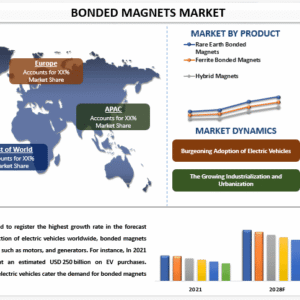When it comes to designing an office space, one of the most important yet often overlooked elements is the conference table. A conference table is not just a piece of furniture but a focal point where collaboration, discussions, and decisions take place. The design of the conference table plays a pivotal role in setting the tone for your meetings and promoting a productive environment. In this blog, we will explore the significance of conference table design and how it can elevate the functionality and aesthetic appeal of your meeting spaces.
The Importance of Conference Table Design in Office Spaces
Conference tables are a central part of any office, especially in businesses that rely on meetings to make decisions, strategize, and collaborate. The design of the table impacts the dynamics of the meeting and influences the flow of communication. A well-thought-out conference table design promotes better collaboration, encourages effective communication, and enhances the overall atmosphere of the office space.
A key aspect of conference table design is its ability to foster inclusivity. The arrangement of the table, the shape, and the size all contribute to how comfortable participants feel during meetings. When everyone has a clear view of each other, it promotes openness and encourages more active participation. Whether you’re having a small brainstorming session or a large corporate meeting, the design of the conference table can significantly impact how ideas are exchanged.
Factors to Consider in Conference Table Design
1. Size and Shape
The size and shape of your conference table are among the first elements to consider. These factors are primarily influenced by the number of people who will regularly use the table. Conference tables come in a variety of shapes, such as rectangular, oval, round, and boat-shaped, each with its own unique benefits.
- Rectangular Tables: These are the most common and offer a traditional look. They are ideal for larger groups and formal settings. The shape also makes it easier to divide the table into sections, allowing people to focus on specific topics during the meeting.
- Round Tables: Round tables promote equality in meetings because no one sits at the “head” of the table. This shape encourages collaboration and makes it easier for everyone to interact and contribute to the discussion.
- Oval Tables: Oval tables are similar to round ones in terms of promoting equal participation but have a more elongated design. They are ideal for larger teams while still fostering a sense of inclusivity.
- Boat-Shaped Tables: Boat-shaped conference tables are perfect for larger meeting rooms where several people will be seated. The design allows for easier communication among participants and ensures that everyone feels connected.
When selecting the size, it’s important to ensure the table is large enough to accommodate all participants comfortably without being too large, which can make the meeting feel impersonal or difficult to engage in.
2. Materials and Finishes
The material you choose for your conference table plays a significant role in determining its durability, aesthetic appeal, and the overall atmosphere of the meeting room. Conference tables are available in a wide range of materials, from traditional wood to modern glass and metal.
- Wood: Wooden tables offer a classic, professional look. They exude warmth and sophistication, making them ideal for corporate settings that want to maintain a traditional appearance. Wood is also highly durable, ensuring that the table will last for years.
- Glass: Glass conference tables are a modern and sleek option that can make a bold statement in any office. Glass tops paired with metal or wood bases offer a clean and minimalist design. These tables are perfect for contemporary office spaces.
- Metal: Metal tables are known for their modern, industrial look and durability. They can be paired with other materials like glass or wood for a unique combination. Metal conference tables are often used in creative industries where a dynamic and innovative atmosphere is desired.
- Laminate: For a budget-friendly option, laminate tables are available in various colors and finishes. They mimic the appearance of wood or other premium materials but at a lower price point.
Choosing the right material not only complements the office decor but also enhances the functionality of the space. The finish should align with the overall design of the office, creating a cohesive and harmonious environment.
3. Functionality and Technology Integration
In today’s business world, meetings are no longer just about face-to-face discussions. Technology plays a key role in facilitating communication, whether it’s through video conferencing, presentations, or real-time data sharing. A conference table that integrates technology can enhance productivity and streamline meetings.
Modern conference tables often come with built-in cable management systems, power outlets, USB ports, and HDMI connections. These features ensure that participants can easily connect their devices, charge their electronics, and present their ideas seamlessly.
Additionally, wireless charging pads and integrated microphones can further enhance the functionality of the table. When choosing a conference table design, it’s essential to consider how technology can be incorporated without compromising the aesthetic or overall design of the room.
4. Comfort and Ergonomics
Comfort is an essential factor in conference table design, especially when meetings can last for hours. An uncomfortable seating arrangement can negatively impact productivity and participation. The seating arrangement around the table should allow for easy movement and provide adequate space for all participants. Chairs with adjustable height, ergonomic support, and comfortable cushioning should be considered for added comfort.
The surface of the conference table should also be smooth and durable, allowing for easy writing and interaction without causing discomfort. The edges of the table should be rounded to avoid any sharp corners that could cause accidents.
Customizing Your Conference Table Design
One of the great advantages of conference tables is that they can be customized to fit the specific needs and branding of your company. From unique shapes and sizes to incorporating your company’s logo and colors, customization ensures that your table is not just functional but also reflects the personality of your brand.
For businesses that frequently hold large meetings or host clients, customizing the conference table can make a lasting impression. A branded conference table not only boosts company pride but also showcases professionalism and attention to detail.
Conclusion: Investing in the Right Conference Table Design
Investing in the right conference table design is a strategic decision that can have long-lasting effects on your office’s functionality and overall atmosphere. A thoughtfully designed conference table not only enhances the aesthetics of your workspace but also fosters collaboration, improves communication, and boosts productivity. When choosing a conference table, consider factors such as size, shape, material, functionality, and customization to ensure that it meets the needs of your team and aligns with your office’s overall design.
If you’re looking for quality office furniture that blends both style and functionality, consider checking out All Office Furniture. Their wide selection of conference tables ensures that you’ll find the perfect match for your office space.





